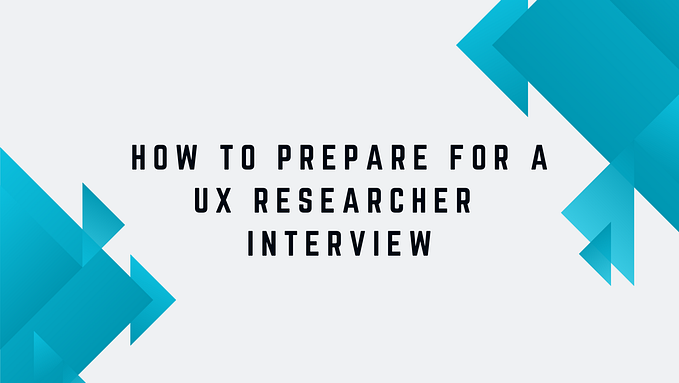UX research during crisis: understanding rapidly evolving user needs to inform responsive design

As individuals and communities, we rely on myriad products and services to navigate our daily lives, and now more than ever we need those products and services to help us solve new problems that are rapidly emerging as the global COVID-19 crisis unfolds. This doesn’t only apply to social good products — it applies to everything. In the coming weeks and months, people will be doing things differently.
Everything from how people make their livelihoods to how they purchase goods and food to how they move from place to place to how they navigate their social, financial, physical and mental health needs will all look different. Marginalized and excluded groups’ vulnerability will be compounded, and newly vulnerable groups will emerge. A practice of crisis-responsive user research and design is necessary to understand how those needs are rapidly evolving collectively and individually and how products can effectively respond to and support users to weather and recover from the COVID-19 crisis.
From my years of experience doing user research for humanitarian response and assistance in complex emergency contexts like Afghanistan and Iraq, here are a few lessons that apply to the current context, starting with a general frame for thinking about crisis contexts then practical and actionable suggestions on how to implement crisis-responsive UX research right now:
What’s different during and after a large-scale crisis like COVID-19?
- What you used to know about your users may now be contextually invalid. Think about where you were and what you were doing two weeks ago. Think about what products you used, when, and how. Think about what problems you used them to solve, and what needs you used them to meet. Now think about one week ago, then think about what’s happening for you now. We don’t live in the same world we did a matter of days or weeks ago, and we don’t know what the world will look like days or weeks or months from now. What you know about your users is likely based on their experiences in a world that no longer exists, and those users are adjusting to this new context in ways you do not yet know or understand.
- Our brains operate differently when there is a perceived threat, meaning decision-making and behaviors are different and can be unpredictable. A crisis is a novel situation. Therefore, we don’t have a “mental script” on how to handle the situation. During this current pandemic, when we are all afraid of something very real about which we have limited control, every single one of us has at least a low hum of that fear as our baseline, and we are chemically, biologically operating outside of the rational parts of our brains and our ‘normal’ decision-making and behavioral processes.
- The problems your users are facing and their needs this week may not be the same problems they need to solve in a few days or weeks as the crisis continues to unfold with cascading effects. What was previously the unexpected has become the expected, but now we can plan for it. Complex systems tend to have ‘tipping points’ and go through ‘phase changes’ once they reach one of those. This means that once a system reaches a certain threshold, things can change rapidly. The butterfly effect of the various consequences of the crisis are highly interconnected. Large-scale shifts are not a matter of if — they’re a matter of when, but there is information available to predict what they might be. If we wait until they happen, it’ll be too late. We need to plan for what we will do when they occur, and we need to also do this for our users.
- The shocks that are being sustained are being felt everywhere, and by everyone. In non-crisis situations, user experiences are driven by contexts that are much more individualized. However, during a systemic crisis we can anticipate and prepare for changes in context and events that we know with near certainty will affect entire user groups.
- Some problems that existed in a ‘normal’ context are not relevant in the crisis context, and the crisis context creates new problems in all of our routine dynamics that did not previously exist. As the cascading effects of this crisis unfold, the users you had may no longer have a need for your product/service, and your product/service may be solving a new problem that didn’t exist before for users that were not previously on your radar. As the crisis continues, your user landscape may be rapidly changing.
What is the disaster management cycle, and where are we now?
The four steps of the disaster management cycle are designed to aid the planning for and minimization of the impact of major incidents, and are widely used across the crisis management and humanitarian community: mitigation, preparedness, response, and recovery.
So, where are we in this cycle now? COVID-19 is officially a pandemic, and we are currently in the response phase to the crisis event. However, there is still an opportunity to activate the mitigation and preparedness phases for future shocks and cascading effects, for example, the possibility of continued travel bans, supply chain disruptions, economic recession, etc. When there are fewer new cases of COVID-19 occurring, reduced risk of repeat waves of infection, and cascading effects begin to diminish, we will enter the recovery phase — looking to return our lives and communities to what they were before this crisis or better. Even though that feels a long way off from now and effective response and mitigation and preparedness for knock-on shocks take priority, it is never too soon to begin thinking about recovery.
So, what do UX Researchers need to do right now?
- Rapid User Needs Assessment
User research is simply a snapshot in time of the behaviors, needs, and goals of users in context of time and place, as well as social, cultural, and system dynamics. Amidst all of the present uncertainty, one thing you can be certain of is that the snapshot you have is no longer reflective of your users’ current context, or their current behaviors, needs, and goals. If you haven’t updated your user research within the past week, it is likely necessary to do a rapid user needs assessment.
Whatever your tools of choice are — empathy mapping, personas, user journey mapping, etc. — you need to do rapid research to develop an understanding of and empathize with how your various user groups are experiencing your product or service during COVID-19 and update them. Not only do you need to understand users’ current behaviors, needs, and goals, you need to identify how those are different from the behaviors, needs, and goals they had before. The purpose of this assessment is not to conduct rigorous user research, but to perform a broad assessment of the crisis and basic needs of your users in order to identify crisis-responsive design considerations.
I cannot emphasize enough the use of the word ‘rapid’ — crises are highly dynamic and information needs are incredibly time-sensitive. Everything that is difficult about user research will only be more difficult in a crisis context. You will face new challenges in engaging stakeholders, user recruitment, and scheduling and carrying out your research, so minimizing the research lift will help ensure you can get to the stage of delivering insights to facilitate responsive design as quickly as possible. What is the “minimum viable research” or “minimum viable ethnography” you would need to do to update what you already know about your users to the current context?
However, rapid user needs assessments cannot be user research as usual. Especially in the immediate aftermath of the crisis, effective research planning requires effective consideration of how the stresses on individuals and systems affects our approach to research:
- Everyone’s time is at a premium right now — don’t waste your users’ time. We’re all in the response phase of this crisis. As individuals, in our households, our livelihoods, and our communities, we’re all being pulled in many different directions as we need to respond to the impacts of this crisis. The same is true for your users, and making reasonable asks of your participants’ time is even more imperative than ever. There should be clear objectives and reasoning why data collection is necessary, and more importantly why it is necessary right now. Additionally, higher than normal incentives are certainly appropriate.
- Whether it’s what you planned or not, all of your research is now at least in part about this crisis. Even if you are implementing user research you had planned previously that is not directly responsive to this crisis, it will be front of mind for most if not all of your participants. You need to be taking extra steps to make tools and framing sensitive to the current situation and consider how it will affect the information you collect.
- Your participants are all likely experiencing a range of mental health issues right now, such as anxiety, traumatic stress, and grief, among others. Honesty, sensitivity, informed consent, and applying do no harm principles in your data collection are imperative.
- Shocks almost always take a larger toll on those groups who were marginalized or excluded before the crisis. What’s more, the steps necessary to deliver your experience may now be exposing people to risk in new or amplified ways. This means that implementing diversity, equity and inclusion-centric research approaches and considering all of the groups and systems involved in the delivery of your experience, not just end users, is even more important than ever.
Of course, stakeholder buy-in is also just as important as ever. The information you collect will only be useful in facilitating crisis-responsive design if the stakeholders responsible for design are bought in and prepared to act on the findings of the research.
2. Develop a Crisis Response and Contingency-Based UX Research Plan
All evidence suggests that this crisis is far from over, and the cascading effects will continue to shape and shift users’ behaviors, goals, and needs, and we need to be prepared to respond as the future unfolds.
Crisis Response UX Research
As much as your current understanding of your users is likely out of context, this will continue to be the case as long as this crisis is still rapidly evolving. You should put a system in place to carry out rapid user needs assessments at a frequency aligned to the volatility and complexity of the crisis. For example, while the crisis, response, and cascading effects are still highly dynamic, you may want to do a weekly rapid user needs assessment to ensure you are staying aware of the impacts it is having on current and potential users and how you can implement rapid iterative design to mitigate and address them. As the volatility of the crisis decreases, you may reduce the frequency commensurately as you begin to observe large-scale shifts happening less or more slowly for your users.
Eventually, as we move out of the response phase and into recovery, the need for rapid user needs assessments will dissipate completely. This scale-down should be done in real-time, as it can be difficult or impossible to predict the lifespan of a crisis of this scale and scope. Mobilizing user research with this frequency will require a concerted shift in the workplan of your research team and a considered approach to recruitment to ensure you are not asking too much of your participants.
Contingency-Based UX Research
A contingency plan is a proactive strategy set up to account for those shocks so you’re prepared if and when they occur.Ideally, you should develop this plan in collaboration with key research stakeholders so that you can proactively agree on the use of resources and reduce the time required to mobilize your research response when shocks occur. Additionally, it will enable design stakeholders to engage in similar contingency-based planning to be prepared to act quickly and decisively on the research you produce.
- Identify potential events that would be likely to impact your users’ needs, goals, and behaviors as it relates to your product and their user experience. For example, a potential shock/event could be an extension of a shelter-in-place order or complete closure of restaurants.
Then, for each individual event:
2. Estimate the likelihood of each event occurring, as well as the vulnerability of current and potential user segments to that event and the impact it may have on them. This can be a simple and rudimentary estimation of whether the likelihood and potential impact are Not Applicable, Low, Medium, or High. You should also brainstorm how you would expect the event might impact each defined user segments’ needs, goals, and behaviors as it relates to your product and their user experience.
3. Identify which part/s of the user experience and/or touchpoints the event might impact for current and potential user segments. This includes touchpoints in the existing product/service as well as user goals, motivations, needs, pain points, and opportunities.
4. Identify what information you would need to understand the impact of the event on current and potential user segments if the event were to occur.
5. Develop a contingency-based research plan for the minimum viable research you would need to do to collect that information in real-time. This should include who your research participants would be, the objectives of the research, your approach to recruitment, the data collection method/s, any associated protocols, resources required, and identifying who the research stakeholders are and how you would engage them and generate/deliver research insights.
6. Identify how to monitor each area of risk with a ‘trigger’ to let you know when you need to mobilize specific actions in your contingency-based research plan.
While predicting exactly how this will unfold is next to impossible, implementing a crisis-responsive UX research practice during the response and based on the contingency of cascading shocks is relatively easy. Adopting this practice is critical to keeping products relevant, solving real problems for real people in crisis, and creating resilience pathways that will help people and communities to weather and recover from the COVID-19 crisis.







